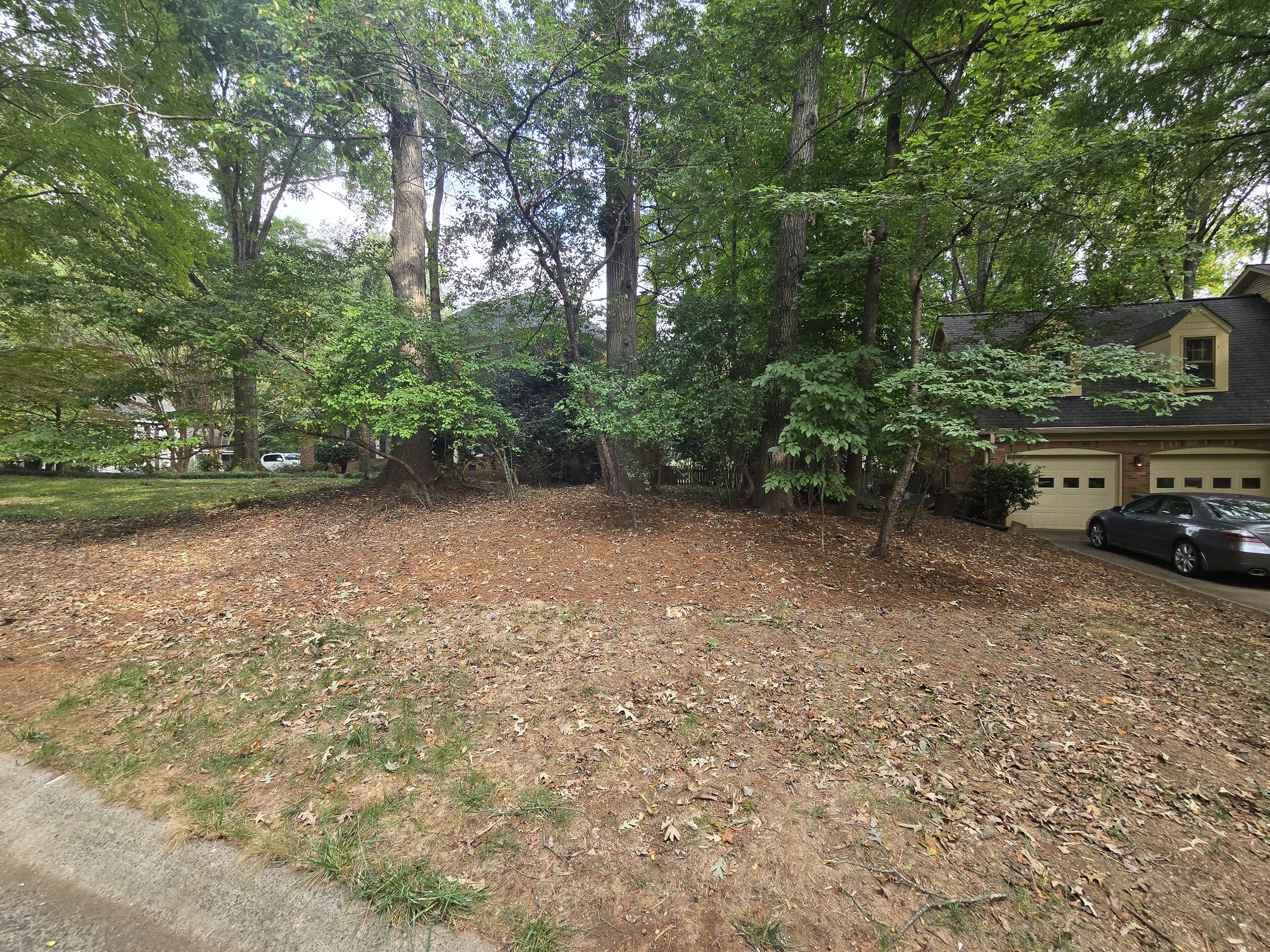After years of trying to grow grass in his shady front yard, our customer came to us this Fall looking for an alternative to reseeding with Fescue and hoping it will turn out better the next year. As a secondary goal, he was looking to add more variety (perennials, shrubs and smaller trees) to the rest of his front yard.
For our design, we proposed reducing the size of the “lawn” section of the garden and replacing it with a matrix of shade tolerant native sedges and grasses. For this case, we used Leavenworth’s sedge and Poverty Oat Grass. Both are compact (foliage < 6” with seedheads ~ 12”), shade tolerant and drought tolerant. In addition to the shade, the soil suffered from moderate compaction and a lack of top soil/organic matter. To improve the soil, we started by adding ~1-1.5” of compost followed by 1-2” of wood chip mulch. The compost adds immediate organic matter while the wood chips help with weed suppression over the first year and add more organic matter as they break down. The shade matrix was installed using 2” landscape plugs at a 10” spacing. The act of planting 1,350 plugs at a tight spacing helps to de-compact the existing soil and blend it with the compost. Due to budgetary constraints, we did not plant part of the “lawn” section, leaving it covered in wood chips with the intention of adding more next Fall.
To add variety, we started by adding a mix of understory trees (Flowering dogwood, American Fringetree and Japanese Maple) and shrubs (American Beautyberry, “Miss Scarlet” Dwarf Florida Anise, Dwarf Yaupon Holly, Oakleaf Hydrangea , Sweet Pepperbush and Virginia Sweetspire) and extending the shrub borders at each end of the yard to the street. Surrounding the reduced “lawn” sections, we added islands of shade tolerant groundcovers (Blue Wood Sedge, Christmas Fern and Slender Wood Oats) interplanted with a mix of spring and fall blooming flowers (Celandine Poppy, Eastern Columbine, Green and Gold, Golden Alexander, Indian Pink, Bluestem Goldenrod and White Wood Aster). These were planted as a mix of bare root, plugs and 4-5” pots.
Not much to see right now as it is mid-December and most of the plants (especially those planted as bare root and plugs) are small and dormant. These plants will spend the next 3 months developing roots, without the heat stress they would face if planted later in the year, before they start to add top growth. As with all our projects, we can’t wait to see this planting come to life next Spring and develop over the years.

Before - lawn and surrounding beds

Before - front right shrub bed

Before - front side

During installation after addition of compost top dressing to planting areas

During Installation - After planting border groundcover/flowers and part way through planting of Leavenworth Sedge/Poverty Oatgrass lawn replacement

After - Leavenworth's Sedge (bright green) and Poverty Oatgrass (curly & brownish) Close Up

After - Leavenworth's Sedge / Poverty Oatgrass lawn replacement

After - shrub / herbaceous border along "lawn" planting

After - groundcover / flower border - Blue Wood Sedge, Slender Wood Oats, Christmas Fern, Eastern Columbine, Blue Stem Goldenrod and White Wood Aster

After - Fern Centric mailbox planting with surrounding "lawn" alternative planting

After - Shrub border along garage - "Miss Scarlet" Florida Anise and Dwarf Yaupon Holly
